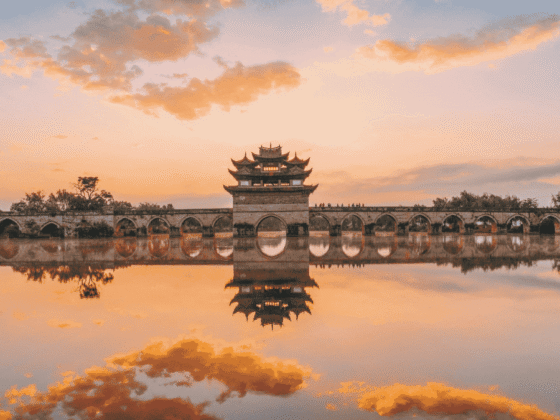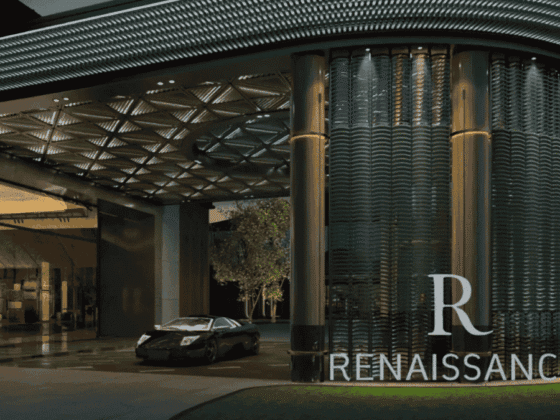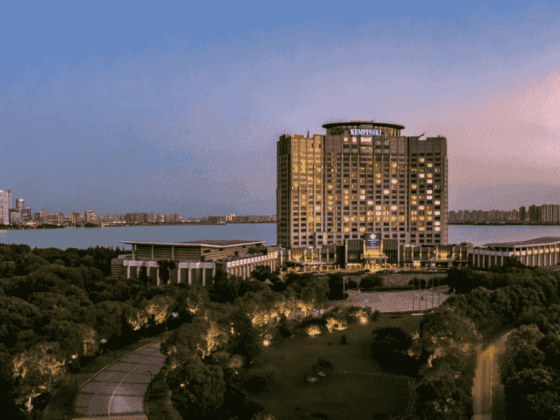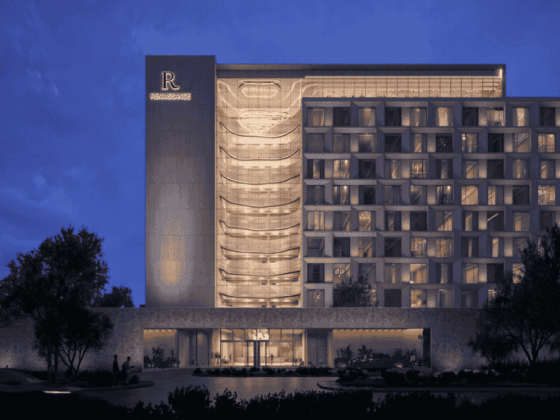
A Journey Through Time, Art, and Cultural Revival
Timeless Allure: Weipo’s Courtyard Homes Through the Ages
To witness Luoyang from above is to trace the unbroken thread of civilization—a city where ancient history pulses with contemporary vitality. At its heart lies Weipo Xinxu, a poetic interplay of old and new, where time’s creases are smoothed into a harmonious dialogue between heritage and innovation.
From a 1,000-year-old village to a canvas for urban reinvention, Weipo Xinxu reimagines tradition. Centuries-old courtyard dwellings now neighbor avant-garde boutiques; sunlit rituals of agrarian life merge with cutting-edge art installations. Here, the city evolves yet remains rooted, its streets a living archive of authenticity and reinvention.
The “Multiverse” of Weipo: A Symphony of Past and Present
At its core, Weipo Xinxu is a love letter to Weijiapo Village, a place where ancestral memories are etched into every brick. Guided by the philosophy of “revival through reinvention,” this project breathes new life into forgotten spaces. Historic courtyard complexes, some standing for over 400 years, are reanimated as galleries, cafes, and design studios—each preserving their soul while embracing modern narratives.
Key to this metamorphosis are Weijiapo’s cultural icons: the architectural poetry of Ming-era residences and the legendary Weizi peony, a floral emblem of resilience. These symbols anchor the district’s identity, even as bold strokes of modernity—think art-infused alleyways and experimental retail—paint a fresh vision.
Breathing New Life into Ancient Walls
Walking through Weipo Xinxu is a tactile journey. Sunlight dances on weathered wooden lattices; moss clings to stone courtyards; intricate carvings whisper tales of dynasties past. The village’s dragon-shaped central axis, once a lifeline for generations of the Wei clan, now guides visitors through a labyrinth of history and innovation.
The mantra “Preserve, don’t demolish; repair, don’t replace” has safeguarded these structures for centuries. Today, they stand as “living museums”—a testament to China’s architectural ingenuity. Even the rare dikengyuan (pit dwellings), ancient prototypes of communal living, find new purpose as immersive cultural spaces.
Curated Modernity: Where Art, Commerce, and Community Converge
Weipo Xinxu’s modern quarter thrums with energy. Cutting-edge brands like Xi’an’s Localand and Shanghai’s Zhizhi Shop debut their Henan flagship stores here, alongside homegrown gems like Wild Dog Books and Awakening Bakery. The district buzzes with eclectic offerings: artisanal tea houses, design workshops, pet-friendly cafes, and cycling culture hubs.
But this is no generic gentrification. Local legends—Alicia’s Kitchen, a revamped neighborhood treasure, or Auntie Xing’s Dessert Parlor, serving seasonal delights—anchor the community. Together, they forge a sustainable ecosystem where commerce and culture thrive in symbiosis.
Art as a Language: Reimagining Public Spaces
“Weipo Xinxu speaks through art,” says its curatorial ethos. Contemporary installations transform ancestral halls into dynamic galleries, sparking dialogues between past and present. Public art here is more than decoration—it’s a bridge, rekindling connections between people, place, and memory.
From avant-garde exhibitions to intangible heritage workshops (think lacquerware or embroidery), creativity flows through every alley. Even the district’s century-old scholar tree, a silent witness to seasons, seems to sprout fresh stories each spring.
The Eternal Dance: Why Weipo Xinxu Endures
To visit Weipo Xinxu is to wander through layered timelines. One moment, you’re tracing fingers along Qing-dynasty brickwork; the next, sipping craft coffee in a converted granary. It’s a place where history isn’t frozen but felt—where every cobblestone and concept store contributes to an ever-evolving “multiverse.”
As Luoyang’s cultural heartbeat quickens, Weipo Xinxu stands as both guardian and pioneer—a masterclass in how cities can honor their roots while rewriting their futures.
Essentials: Plan Your Visit to Weipo Xinxu
Getting There
Address: No. G30, Lianhuo Expressway Link, Mengjin District, Luoyang.
Transport:
By car: A 30-minute drive from downtown Luoyang, with free parking available.
By public transit: Take Bus 301 directly to the site, or hop on the tourist shuttle from Longmen High-Speed Rail Station.
Itinerary Inspiration
Wild Dog Books → Zhizhi Shop → East Dikeng Plaza → Century-Old Scholar Tree → Opera Stage → Grand Lawn → Zhichi Lifestyle Studio → Zilaiye Outdoor Hub → Youxi Boutique → Bulan Rabbit → Yishan Tea House → Awakening Bakery (exit via the bakery’s side).
Must-Visit Shops & Bites
1. Zhizhi Shop
A 2024 reimagining of the cult Shanghai brand, this compact 200-sqm space debuts Jingjiao Gifts—a whimsical self-curated line designed to reinvent gifting culture.
2. Wild Dog Books
A treasure trove of local文创 (cultural creativity), with a photogenic courtyard perfect for Instagram moments.
3. Nothing Café
A pink-hued wonderland where design meets daring flavors. Sip on signature drinks like the Raspberry-Pink Pepper Espresso Tonic or the Cherry Cedarwood Liqueur Latte—a boozy, aromatic delight.
4. O.P.S. Coffee
Worth the hype (and the queue). Opt for the Seasonal Set—an ever-changing symphony of avant-garde brews.
5. Two Bowls of Rice
Hailing from Chengdu, this minimalist gem serves silky-smooth rice bowls crowned with artisanal toppings. Don’t miss their “rice card” souvenir—two grains framed as edible art.
6. Beaver Coffee
A sensory play: tart hibiscus-berry cold brews with popping candy rims, or the ethereal Jasmine Ice Borges—a milky, floral revelation.
Pro Tips
Zone Strategy: Focus explorations on three key areas—New Retail Quarter, Heritage Courtyards, and Grand Lawn.
Dining Note: While Weipo excels in coffee and desserts, head to the nearby Snack Street for hearty local eats.
Parking Perk: Ample free parking—no reservation needed.










